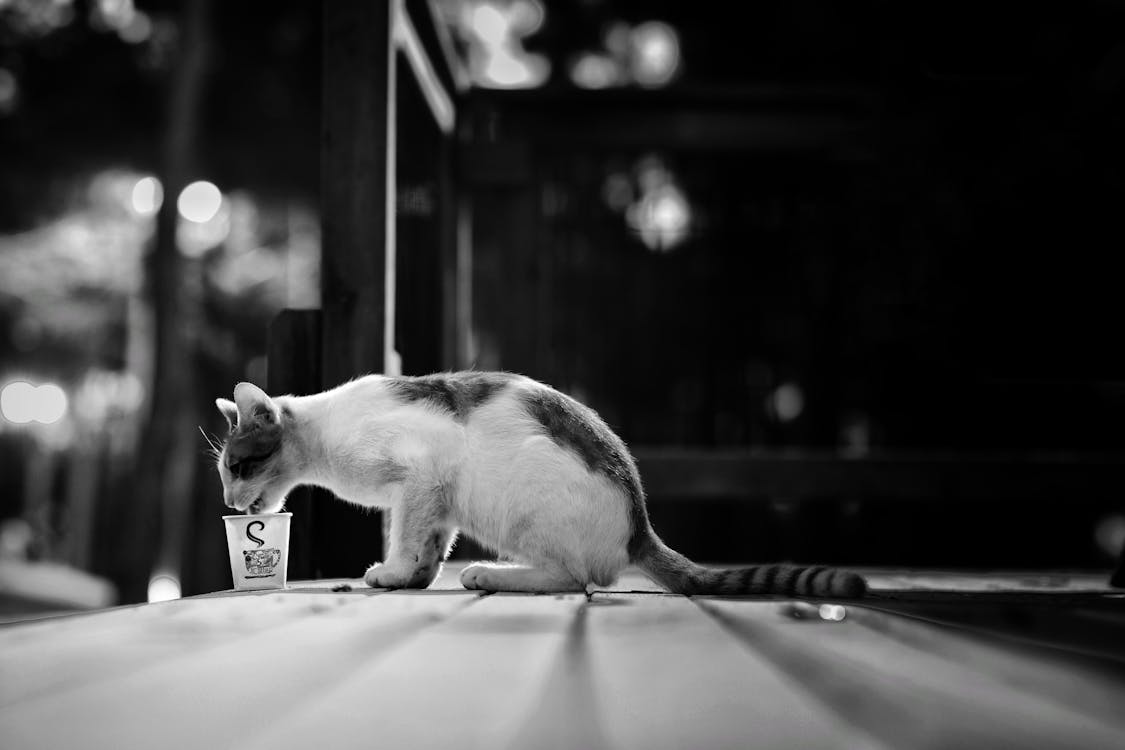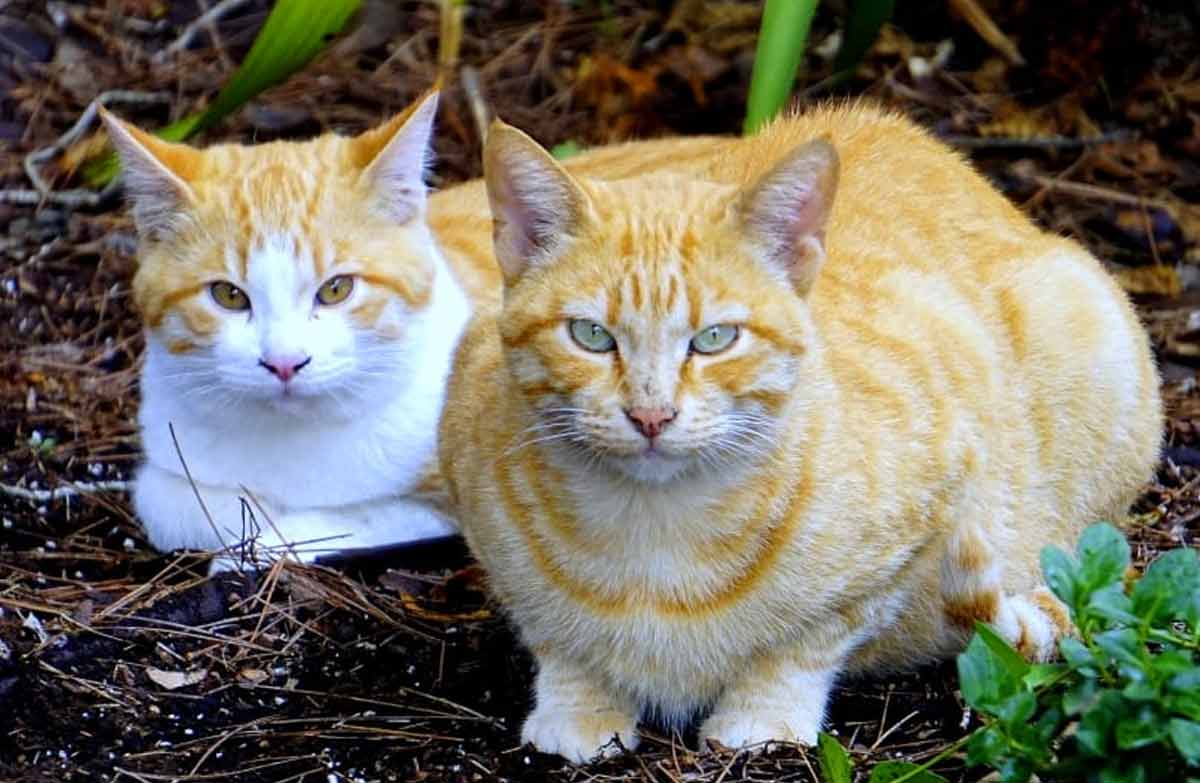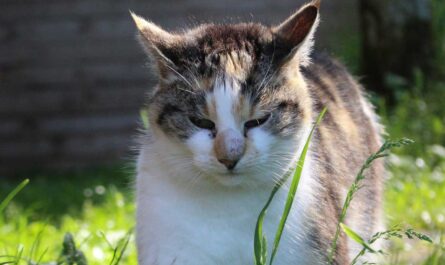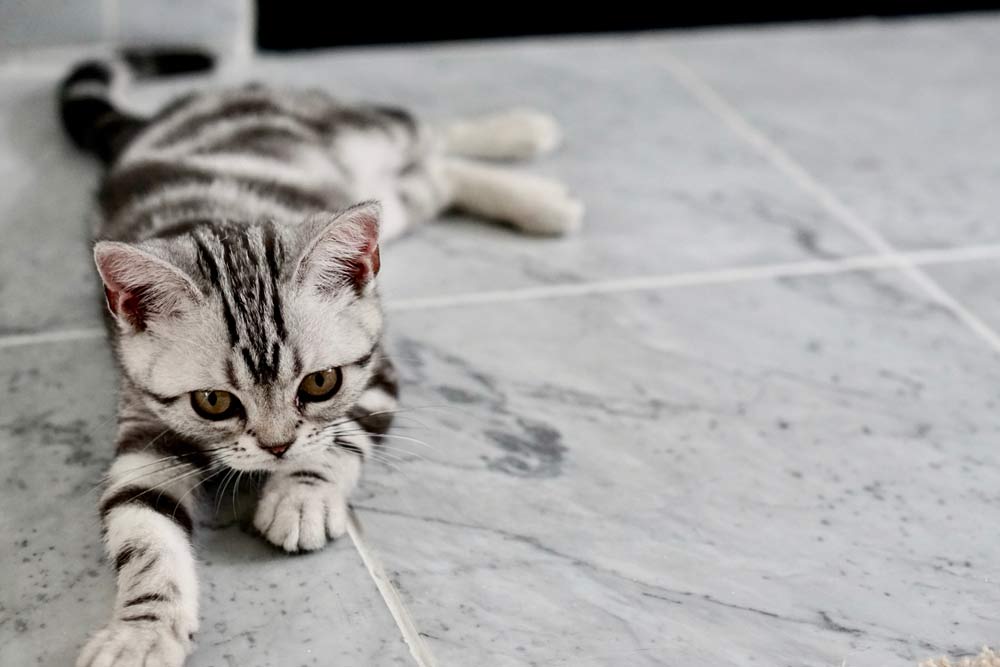Can cats eat chocolate? Imagine this: you’re enjoying a relaxing evening, indulging in a box of decadent chocolates. Suddenly, a furry whirlwind darts across the room, a mischievous glint in its eyes. Your feline friend has zeroed in on your sweet treat, batting playfully at the box. The question arises – can cats even eat chocolate?
Intrigued but cautious, you’ve come to the right place! This guide will dispel the common misconception that chocolate is a harmless treat for our feline companions. We’ll delve into the fascinating world of feline taste buds and explore why chocolate is, in fact, toxic to cats. We’ll also navigate the diverse world of chocolate itself, uncovering the varying levels of danger posed by different types.
But fear not, cat lovers! Just because chocolate is off the menu doesn’t mean your furry friend can’t enjoy a delicious treat. We’ll explore some fantastic and safe alternatives to satisfy your cat’s sweet tooth. Finally, we’ll tackle some common myths and misconceptions surrounding chocolate and cats, ensuring you have all the information you need to keep your feline friend safe and happy.
This guide is designed to be your one-stop shop for understanding chocolate’s effects on cats. So, grab a comfy spot, cuddle up with your purring companion, and let’s embark on this delicious – yet informative! – journey together.
The Dark Secret: Why Chocolate is a No-No for Cats
Chocolate, that delightful treat enjoyed by humans for centuries, holds a hidden danger for our feline companions. While we savor the rich, cocoa-y goodness, even a small amount of chocolate can be toxic to cats. Let’s delve into the science behind this surprising fact and understand why it’s crucial to keep chocolate out of your cat’s reach.
The Culprits in the Cocoa: Theobromine and Caffeine
The main culprits behind chocolate’s toxicity for cats are two specific compounds: theobromine and caffeine. These belong to a group of chemicals called methylxanthines, which act as stimulants in the nervous system.
Theobromine is the bigger threat for cats. Unlike humans, cats lack the enzymes needed to efficiently break down and eliminate theobromine from their bodies. This means that even a small amount of chocolate can lead to a buildup of theobromine in their system, causing a variety of health problems.
Caffeine, another methylxanthine present in chocolate, also contributes to the potential toxicity. While cats are more sensitive to theobromine, caffeine can still have negative effects on their nervous system.
Metabolic Mismatch: Why Cats Can’t Handle Chocolate Like Us
The key difference between humans and cats lies in their metabolism. Our bodies are equipped with enzymes that effectively break down theobromine and caffeine, allowing us to safely enjoy chocolate. However, cats lack these essential enzymes, leaving them vulnerable to the toxic effects of these compounds.
Imagine your cat’s body as a tiny factory. Theobromine and caffeine are like raw materials that need processing. In humans, the factory has the necessary machinery (enzymes) to break down these materials and safely dispose of them. Unfortunately, a cat’s factory lacks this crucial equipment, causing the raw materials (theobromine and caffeine) to accumulate and wreak havoc on the system.
Dose Makes the Poison: Understanding the Severity of Chocolate Toxicity
The severity of chocolate poisoning in cats depends on several factors:
-
The Type of Chocolate: Dark chocolate contains the highest concentration of theobromine, making it the most toxic type for cats. Milk chocolate and white chocolate generally have lower theobromine levels, but they can still be harmful if ingested in large quantities.
-
The Amount Consumed: The more chocolate a cat eats, the higher the risk of poisoning. Even a tiny nibble of dark chocolate can be dangerous for a small cat.
-
The Size of the Cat: Kittens and smaller cats are more susceptible to chocolate poisoning due to their lower body weight. A small amount of chocolate that might be harmless to a large cat could be quite dangerous for a tiny kitten.
It’s important to remember that chocolate toxicity is a serious issue. If you suspect your cat has eaten chocolate, it’s crucial to seek immediate veterinary attention. By understanding the science behind chocolate’s toxicity and the factors influencing its severity, we can keep our feline friends safe and sound.
A Spectrum of Danger: Why Chocolate is a No-No for Cats
Chocolate, that delightful treat enjoyed by humans worldwide, can hold a hidden danger for our feline companions. While the sight of those pleading eyes gazing hopefully at your sweet stash might be tempting, it’s crucial to understand that chocolate is toxic to cats. Let’s delve deeper into the specifics of this sweet yet potentially harmful treat.
Baking Chocolate and Cocoa Powder: A Double Dose of Trouble
Among the chocolate culprits, baking chocolate and cocoa powder reign supreme in terms of their risk to cats. These concentrated forms of chocolate boast alarmingly high levels of theobromine, a compound that cats have difficulty metabolizing. Unlike humans, feline bodies struggle to break down theobromine, leading to a toxic build-up that can cause serious health problems. Even a small amount of baking chocolate or cocoa powder can be dangerous for your cat, so it’s best to keep these ingredients well out of their reach.
Imagine your cat as a tiny detective – curious and drawn to explore new things. An unattended bowl of baking chocolate chips might seem like a delicious treasure trove to them, but ingesting even a few chips can lead to a trip to the veterinarian. So, when indulging in your own baking adventures, remember to store these ingredients securely, away from your feline friend’s inquisitive nose.
Dark Chocolate: Not as Dark a Threat, But Still a Concern
Dark chocolate, often touted for its health benefits for humans, falls somewhere in the middle of the chocolate danger zone for cats. Generally, dark chocolate contains a higher concentration of theobromine compared to milk chocolate. However, the exact amount of theobromine can vary depending on the cocoa content. Darker chocolates with a higher percentage of cocoa will naturally pose a greater risk to your cat.
Here’s a helpful analogy: Think of dark chocolate as a spectrum. The higher the cocoa content, the further along the danger zone your cat ventures if they ingest it. While a small nibble of dark chocolate with a lower cocoa percentage might not be as perilous as a chunk of baking chocolate, it’s still best to avoid offering any chocolate to your cat altogether.
Milk Chocolate and White Chocolate: Lesser Threats, But Not Safe Havens
While milk chocolate and white chocolate generally contain lower levels of theobromine compared to their darker counterparts, it’s important to clarify that they are not entirely risk-free for cats. Milk chocolate still contains some amount of theobromine, and white chocolate, although lacking significant theobromine, might contain ingredients like milk or sugar that could cause digestive upset in your feline friend.
Remember, even a small amount of chocolate can be harmful depending on your cat’s size and individual sensitivity. It’s simply not worth the risk. There are plenty of delicious and cat-safe treats available to spoil your furry companion – from delectable salmon-flavored morsels to enticing catnip-infused toys. So, keep the chocolate for yourself, and shower your cat with love and treats specifically designed for their enjoyment and well-being. After all, a happy cat with a safe and healthy belly is a purrfect reward for any responsible pet owner.
A Cause for Concern: Recognizing Signs of Chocolate Poisoning
While the sight of your cat batting playfully at a piece of chocolate might be comical, it’s crucial to understand that chocolate can be quite dangerous for our feline friends. The culprit behind this feline health hazard lies in two specific compounds found in chocolate: caffeine and theobromine. Unlike humans, cats lack the enzymes needed to efficiently metabolize these compounds, leading to potential toxicity.
So, how do you know if your curious cat has indulged in a forbidden chocolatey treat? Here’s a breakdown of the signs and symptoms to watch out for:
Early Warning Bells: The Initial Signs of Trouble
If your cat has ingested chocolate, they might start exhibiting some signs of discomfort within a few hours. These early warning signs can include:
-
Vomiting: This is a common response to ingesting something that upsets your cat’s stomach. If your cat throws up once or twice after potentially eating chocolate, it’s important to monitor them closely for further signs.
-
Diarrhea: Similar to vomiting, diarrhea can indicate gastrointestinal distress caused by the chocolate. Loose stools or frequent bowel movements can be a cause for concern, especially if accompanied by other symptoms.
-
Excessive Thirst and Urination: Chocolate can have a diuretic effect, meaning it increases urination. This can lead to your cat feeling excessively thirsty and drinking more water than usual.
It’s important to note that these early signs can be vague and might not always be a clear indication of chocolate poisoning. However, if you suspect your cat has eaten chocolate and they exhibit any of these symptoms, it’s best to err on the side of caution and seek veterinary attention.
When the Play Gets Serious: Potential Neurological Signs
In more severe cases of chocolate poisoning, cats might develop neurological signs. These can be quite alarming and require immediate veterinary intervention. Here’s what to watch out for:
-
Tremors: Muscle tremors or shaking can be a sign that your cat’s nervous system is being affected by the chocolate toxins.
-
Hyperactivity: While some cats might become lethargic after ingesting chocolate, others might experience a surge of hyperactivity or restlessness.
-
Seizures: Seizures are a serious neurological symptom that can occur in severe cases of chocolate poisoning. If your cat experiences a seizure, seek immediate veterinary care.
-
Coma: In extreme situations, chocolate poisoning can lead to coma, a state of unconsciousness. This is a life-threatening complication and requires immediate emergency veterinary attention.
Remember, the severity of symptoms can vary depending on the type and amount of chocolate ingested. Dark chocolate, for example, contains a higher concentration of theobromine than milk chocolate, and therefore poses a greater risk. If you suspect your cat has eaten any amount of chocolate, don’t wait for them to exhibit symptoms – seek professional veterinary help right away.
Swift Action Saves Lives: The Importance of Early Intervention
Time is of the essence when it comes to chocolate poisoning in cats. If you suspect your cat has ingested chocolate, do not wait for symptoms to appear. The sooner you seek veterinary care, the better the chances of a full recovery.
Here’s what to do if you think your cat has eaten chocolate:
-
Call your veterinarian immediately. Explain the situation and follow their instructions. They might advise you to bring your cat in for an examination or provide guidance on what to do at home.
-
Do not induce vomiting at home. This can be dangerous for cats and should only be attempted under the guidance of a veterinarian.
-
Keep your cat calm and comfortable. While you wait for veterinary attention, try to keep your cat calm and prevent them from exerting themselves.
By acting swiftly and seeking professional help, you can ensure your cat receives the prompt treatment they need to recover from chocolate poisoning.

Sweet Alternatives: Keeping Your Cat Happy and Healthy
While watching your cat bat longingly at a piece of chocolate you’re enjoying might be tempting, it’s important to remember that chocolate is a definite no-no for our feline friends. But fear not, cat lovers! There are plenty of safe and delicious alternatives to satisfy your cat’s sweet tooth and keep them happy and healthy. Let’s explore some delectable options that are purrfectly suited for your furry companion.
Feline-Friendly Treats: A Catered Selection of Deliciousness
The pet industry is brimming with fantastic treats formulated specifically for cats. These treats are not only safe for your cat to consume but also cater to their unique nutritional needs and taste preferences. Here’s a glimpse into the delightful world of feline-approved treats:
-
Commercially Prepared Treats: From crunchy kibble infused with enticing flavors like salmon or chicken to bite-sized morsels bursting with irresistible textures, there’s a commercial cat treat out there to tantalize every taste bud. Look for treats formulated with high-quality ingredients like real meat and limited fillers. These treats can be used for training purposes, positive reinforcement, or simply as a delightful snack.
-
Freeze-Dried Treats: These treats offer a burst of flavor and a satisfying crunch. Made from real meat or fish that’s been gently freeze-dried to preserve its natural goodness, these treats are a healthy and protein-rich alternative to traditional treats. They can be enjoyed whole or crumbled over your cat’s regular food for an added taste sensation.
-
Catnip-Infused Treats: For cats who find themselves enchanted by the allure of catnip, these treats offer a double dose of delight. The inclusion of catnip, a natural attractant for many felines, alongside delicious flavors creates a truly irresistible treat experience.
Remember: Always follow the serving recommendations on the package to avoid overfeeding your cat. Treats should be offered in moderation as part of a balanced diet.
Homemade Delights: Crafting Culinary Creations for Your Cat
For those who enjoy a bit of DIY fun, whipping up homemade treats for your cat can be a rewarding experience. Here are a couple of safe and easy recipes to get you started:
-
Simple Tuna Treats: These protein-packed treats are a surefire hit with most cats. Combine a can of tuna in water (drained) with a tablespoon of mashed sweet potato or unsweetened applesauce. Form the mixture into small balls and bake at 350°F (175°C) for 15-20 minutes, or until firm. Allow the treats to cool completely before offering them to your cat.
-
Chicken and Oat Treats: These treats offer a delightful combination of savory and slightly sweet flavors. Cook 1/2 cup of rolled oats and shred some cooked, boneless, skinless chicken breast. Combine the ingredients with a mashed banana to create a workable dough. Roll out the dough on a lightly floured surface and cut into desired shapes. Bake at 350°F (175°C) for 20-25 minutes, or until golden brown. Allow the treats to cool completely before offering them to your cat.
Important Note: Always consult your veterinarian before introducing any new foods into your cat’s diet, especially if they have any allergies or pre-existing health conditions.
Enrichment Through Play: A Rewarding Alternative
Cats are natural-born hunters with a strong prey drive. Engaging your cat in interactive playtime with toys like feather wands, catnip-filled mice, or laser pointers provides them with physical and mental stimulation. This enrichment not only strengthens your bond with your cat but can also help to reduce their desire for sugary treats.
By incorporating regular playtime into your cat’s daily routine, you’ll be providing them with a healthy outlet for their energy and keeping them happy and entertained. A well-stimulated cat is less likely to seek out sugary treats or engage in destructive behaviors.
Remember, a little creativity and a focus on healthy alternatives can go a long way in keeping your cat happy and healthy, all while keeping them away from tempting but potentially harmful sugary treats. So, ditch the chocolate and explore the world of safe and delightful options that will have your cat purring with satisfaction.
Debunking Myths: Unwrapping the Truth About Chocolate and Cats
Chocolate. That smooth, decadent treat that melts in your mouth and brings a smile to your face. But for our feline companions, chocolate can be a dangerous hidden threat. While we may enjoy indulging in a piece of dark chocolate or a handful of milk chocolate chips, even the smallest amounts can be harmful to our curious cats. Let’s debunk some common myths surrounding chocolate and cats, ensuring our furry friends stay safe and sound.
Myth 1: A Little Nibble Can’t Be That Bad, Right? Wrong!
It might be tempting to think that a tiny taste of your chocolate bar won’t hurt your cat. After all, they’re much smaller than humans! However, this seemingly harmless nibble can have serious consequences. The culprit behind chocolate’s toxicity for cats is a compound called theobromine. Unlike humans, cats metabolize theobromine very slowly, allowing it to build up in their system and cause illness. Even a small amount of chocolate can contain enough theobromine to make your cat sick.
The Dangers of Theobromine: Theobromine can trigger a range of unpleasant symptoms in cats, including vomiting, diarrhea, excessive thirst, urination, hyperactivity, tremors, and seizures. In severe cases, it can even lead to cardiac arrhythmias, coma, and even death. Health books, guides, exercises, habits, Diets, and more
Remember: Every cat is different, and their sensitivity to theobromine can vary. There’s no safe amount of chocolate for cats, so it’s best to err on the side of caution and keep chocolate completely out of their reach.
Myth 2: Milk Chocolate is the “Safe” Option, Right? Not Quite!
Milk chocolate might seem like a milder option compared to dark chocolate, but it’s still a risky treat for your cat. While milk chocolate generally contains lower levels of theobromine compared to dark chocolate, the amount of theobromine can vary depending on the cocoa content. Additionally, milk chocolate often contains a fair amount of sugar and dairy products, which can cause digestive upset in cats.
The Bottom Line: It’s best to avoid giving your cat any type of chocolate, regardless of the cocoa content. There are plenty of delicious and cat-safe treats available that will satisfy your feline friend’s sweet tooth without putting their health at risk.
Myth 3: Homemade Treats Are Always the Healthier Choice, So Surely They’re Safe for My Cat? Proceed with Caution!
While homemade treats can be a thoughtful way to show your cat some love, it’s crucial to ensure you’re using cat-safe ingredients. Some common baking ingredients, like xylitol, grapes, raisins, and macadamia nuts, can be toxic to cats. Before whipping up a batch of homemade cat treats, do your research and double-check that all the ingredients are safe for your feline friend. Cat accessories on Amazon
Safe and Delicious Alternatives: There are many recipes available online specifically for cat-safe treats. These treats often incorporate ingredients like cooked chicken, tuna, or salmon – all delicious options that your cat will surely enjoy. You can even find commercially available freeze-dried treats made with these safe and healthy ingredients.
By debunking these common myths and understanding the potential dangers of chocolate, you can keep your cat safe from harm. Remember, when it comes to chocolate and cats, it’s always better to be safe than sorry!
Other Interesting Articles
- How To Take Care of A Baby Kitten 2 Weeks Old: 6-Step Guide
- 20 Famous People and Legends Who Loved & Had Pet Cats
- How To Tell If A Cat is Male/Boy or Female/Girl: Tips, Guide
- A Guide to Socializing Shy, Frightened, or Traumatized Cats
- How to Stop A Cat From Spraying Indoors: Home Remedies
- How to Help Cats Get Along with a Kitten Step-By-Step
- How To Tell If Your Cat Has A Triple Coat: 7 Simple Steps
- How To Tell If Your Cat Has Down Syndrome: Signs & Myths
- 11 Signs Your Cat is a Girl: Tips To Distinguish A Female Cat
- Petting A Shy Cat: A How-To Guide, Tips, Dos, Don’ts, FAQs
- How To Tell If Your Cat Has Fleas: Best Tips To Take Care
- How To Tell If Your Cat Can’t Hear: 10 Tips To Help A Deaf Cat
- Why is My Cat Making A Weird Vibrating Noise: What To Do
- How To Tell If A Shy Cat Likes You: 14 Signs To Observe
- How To Stop A Cat From Spraying Outside: 20 Tips To Try
- How To Tell If My Cat is in Pain After Surgery: 17 Implied Signs
- How to Take Care of A Kitten For the First Time: 20 Tips
- 20 Prohibited Things You Should NEVER Do To Your Pet Cat
- What to Know Before Getting a Second Cat: Tips & Guide
- What Scents and Smells Do Cats Hate? How To Deal With



